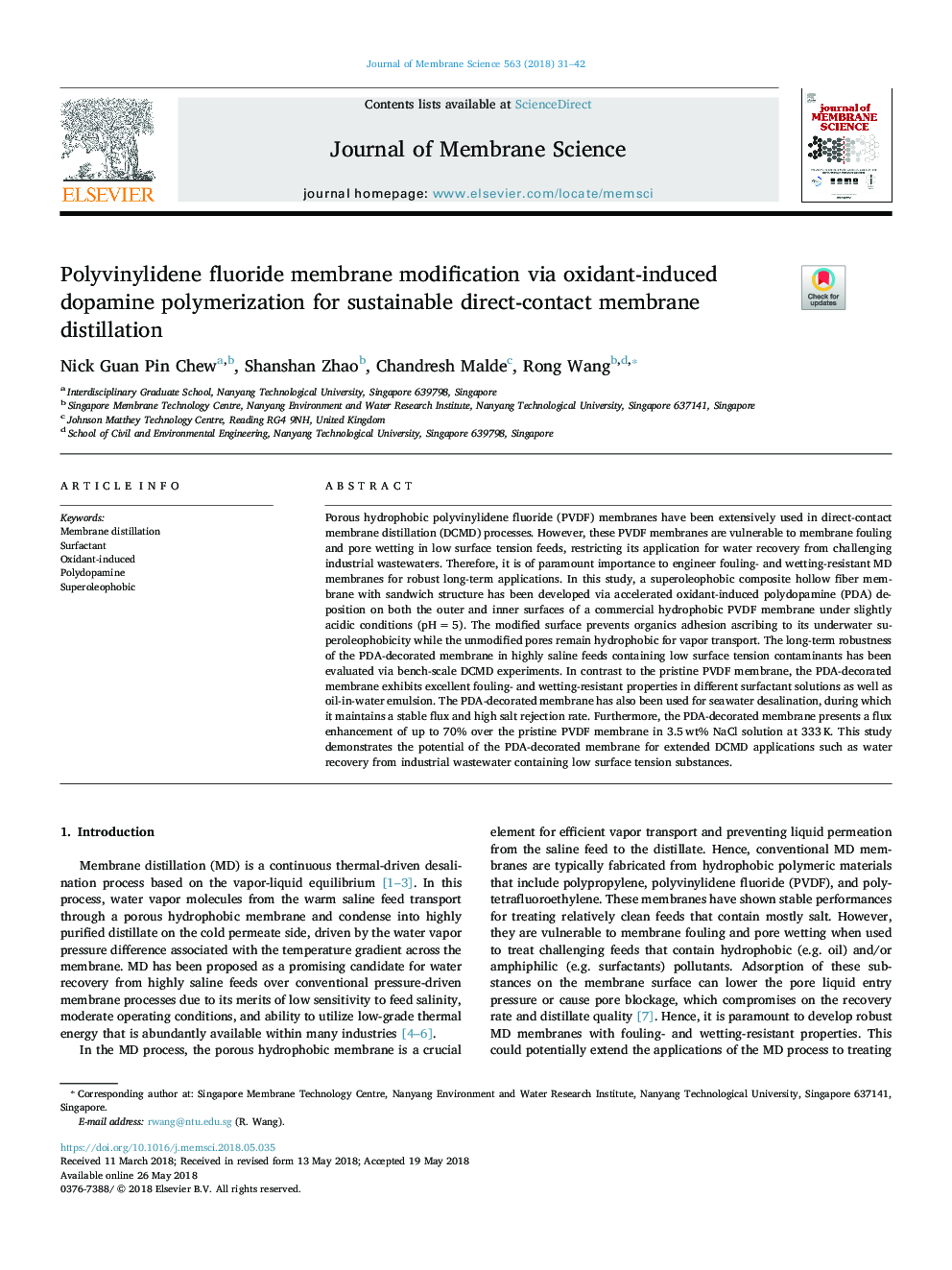| Article ID | Journal | Published Year | Pages | File Type |
|---|---|---|---|---|
| 7019667 | Journal of Membrane Science | 2018 | 12 Pages |
Abstract
Porous hydrophobic polyvinylidene fluoride (PVDF) membranes have been extensively used in direct-contact membrane distillation (DCMD) processes. However, these PVDF membranes are vulnerable to membrane fouling and pore wetting in low surface tension feeds, restricting its application for water recovery from challenging industrial wastewaters. Therefore, it is of paramount importance to engineer fouling- and wetting-resistant MD membranes for robust long-term applications. In this study, a superoleophobic composite hollow fiber membrane with sandwich structure has been developed via accelerated oxidant-induced polydopamine (PDA) deposition on both the outer and inner surfaces of a commercial hydrophobic PVDF membrane under slightly acidic conditions (pHâ¯=â¯5). The modified surface prevents organics adhesion ascribing to its underwater superoleophobicity while the unmodified pores remain hydrophobic for vapor transport. The long-term robustness of the PDA-decorated membrane in highly saline feeds containing low surface tension contaminants has been evaluated via bench-scale DCMD experiments. In contrast to the pristine PVDF membrane, the PDA-decorated membrane exhibits excellent fouling- and wetting-resistant properties in different surfactant solutions as well as oil-in-water emulsion. The PDA-decorated membrane has also been used for seawater desalination, during which it maintains a stable flux and high salt rejection rate. Furthermore, the PDA-decorated membrane presents a flux enhancement of up to 70% over the pristine PVDF membrane in 3.5â¯wt% NaCl solution at 333â¯K. This study demonstrates the potential of the PDA-decorated membrane for extended DCMD applications such as water recovery from industrial wastewater containing low surface tension substances.
Related Topics
Physical Sciences and Engineering
Chemical Engineering
Filtration and Separation
Authors
Nick Guan Pin Chew, Shanshan Zhao, Chandresh Malde, Rong Wang,
